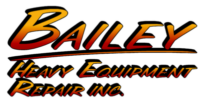What Is Hydrostatic Repair?
Hydrostatic drives, also known as hydrostatic transmissions, are used in a variety of applications across many industries. This type of drive is the transmission of choice when a hydraulic motor must be driven at variable speeds and offer bi-directional capabilities. Hydraulic drives are often found in mobile equipment, centrifuges, log cranes, conveyors and chemical washers. When this type of system breaks down, it requires specific methods of repair. But how exactly does hydrostatic repair work?
This is one of the most misunderstood transmission systems. Many of the components are enclosed in a pump assembly, so it can be difficult to understand how hydrostatic repair works. Here’s a quick overview to provide the insights you need.
Hydrostatic repair explained
Hydrostatic systems contain fluid. Any time fluid is located inside a container, it puts pressure on the walls of that container. Within a hydrostatic transmission system, the fluid puts pressure on the components. This is called hydrostatic pressure. Over time, this pressure can cause wear and tear on the system. Eventually, the hydrostatic system may need to be rebuilt.
When a rebuild is needed, experts in hydrostatic repair will complete a full rebuild process for the drive system. This process should include the following essentials:
- Inspection: The components are disassembled and inspected by a qualified technician.
- Cleaning: The technician will use solvent to clean each part and place it in a dust-reduced environment.
- Calibration: The hydrostatic repair expert will check each component to make sure it meets manufacturer specifications. He or she will measure and calibrate each part to confirm it meets these standards.
- Replacement: The technician disassembles all valves and rebuilds or replaces them as needed.
- Reconditioning: Each part will be replaced, machined or reconditioned to bring it up to manufacturer specifications.
- Rebuilding: The high-pressure manifold and the charge pump are rebuilt.
- Sealing: The technician will replace O-rings, seals and gaskets. This should include a new shaft seal.
- Checks: The technician will use a specialized tool to check the hydraulic drive for leaks.
- Recording: The hydraulic expert will record all readings and quality levels and check them against manufacturer specifications.
- Adjustments: Flow and pressure should be checked and adjusted to recommended specifications.
- Filling: The technician will fill the hydraulic system with oil.
- Painting: Lastly, the technician will paint the system and complete the finish with a quality seal.
Who does hydrostatic repair?
If you need hydrostatic repair, you need to entrust the job to experts who know how hydrostatic repair works. Look for professionals who have a track record of success in the industry. They should have experience with a variety of equipment and offer on-site repair for your convenience. For the best results, look for a locally-owned provider of hydrostatic repair services that puts its customers first.
Schedule hydrostatic repair today
For quality hydrostatic repairs, contact the team at Bailey Heavy Equipment Repair, Inc. Family owned and operated, we specialize in meeting all your hydraulic equipment repair needs. Our experts can provide on-site repair, machining, assemblies, sales and more. Reach us today at 541-989-8507 with any questions or to schedule your next repair.
